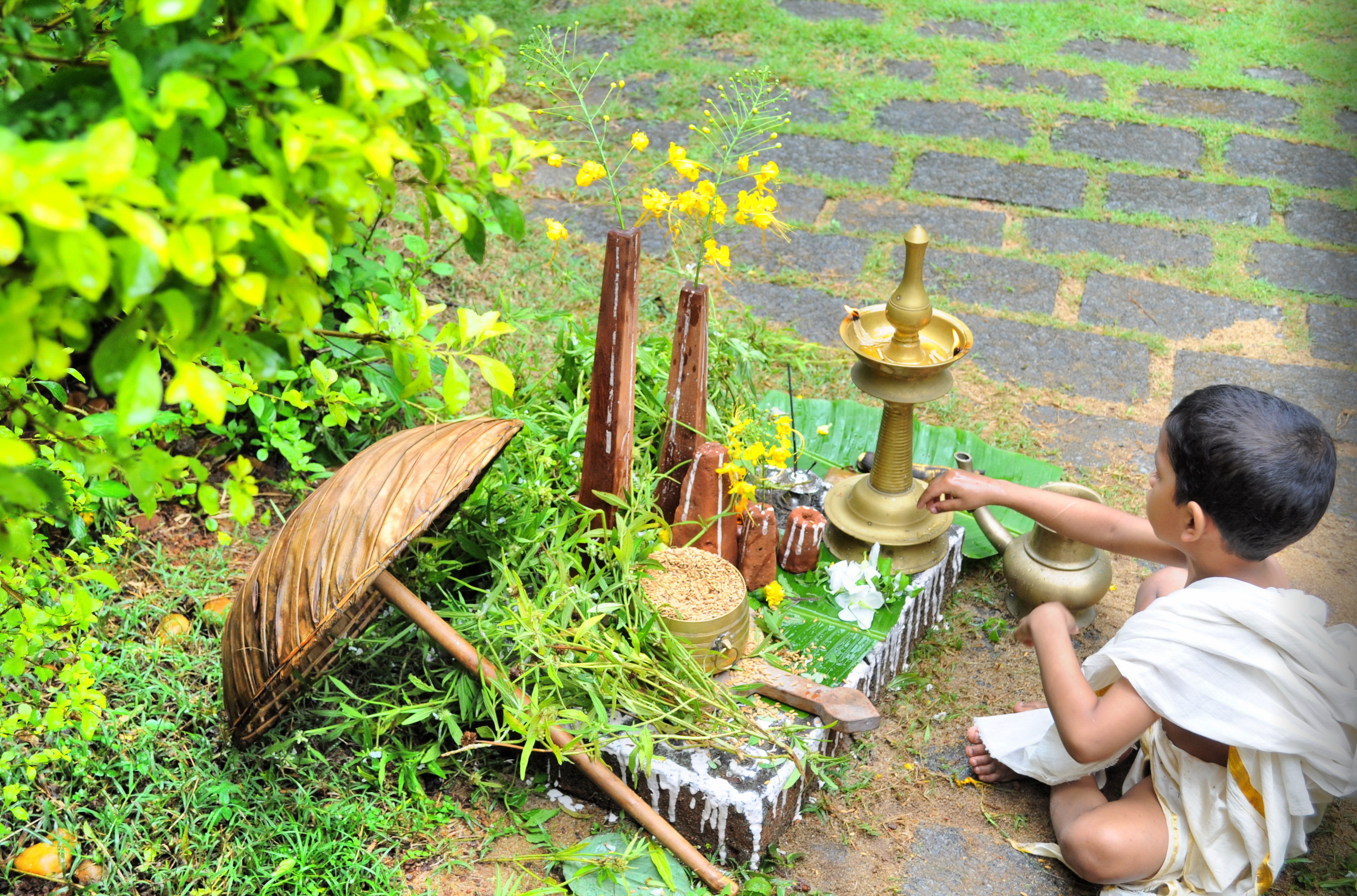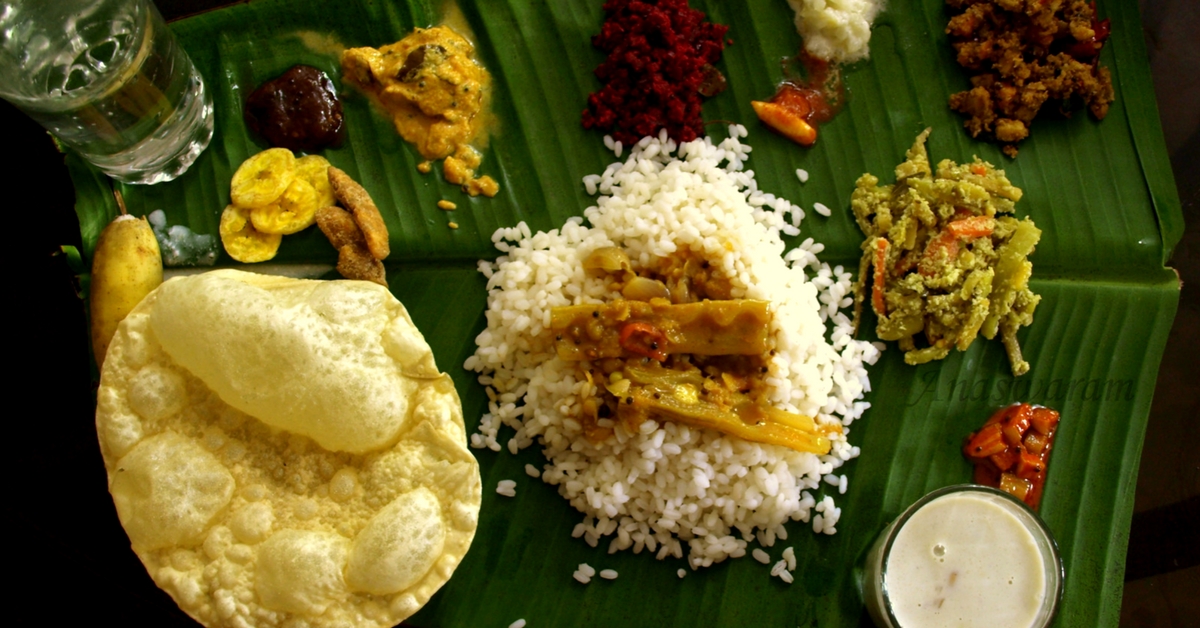The festival of Onam is certainly celebrated with much fanfare in Kerala.
The fervour with which Malayalis across the state await the festival is akin to the way most of us would look forward to the New Year’s Eve.
Apart from being the harvest festival, Onam is celebrated to welcome the legendary demon king Mahabali, who is more popularly known as Maaveli.
Believed to be one of the greatest kings to have ruled Kerala, it is said that such was his attachment to his subjects that every year Maaveli makes a fabled visit to his kingdom to see how they are faring in life.

Falling in the month of Chingam, which marks the first month in the solar calendar of Kollavarsham, Onam is celebrated over a 10-day period.
Each of these days has significant customs and rituals that add up to the final day, which is the Thiru Onam or Thiruvonam.
Pookalams (floral rangoli), snake boat races, feasts, native art forms, processions, games and gifts—all of these are the essentials that make Onam the festival of happiness and merriment in full measure.
Here is a glimpse into the age-old traditions and festivities practised during the 10-day long festival that celebrates Maaveli’s homecoming:
Atham
Marking the beginning of Onam season, the day begins with people making customary visits to the temples.
A grand procession called Atthachamayam is flagged off at Thrippunithura near Kochi, the place from where Maaveli is supposed to have been banished from Earth.
This day also marks the commencement of the king preparing for his visit to Kerala.
Atham also is the day when people start decorating their homes with beautiful flower arrangements known as Pookalam.
Traditionally, the Pookalam laid on Atham is known as athapoo and is quite small in size and adorned with yellow flowers. With each passing day of the festival, the size of the Pookalam increases with the addition of flowers.
Chithira
A common custom in India is the cleaning of homes with the onset of festivals. The folks in Kerala also undertake this task of sprucing up their homes on the second day of Onam.
A second layer of flowers makes its way to the Pookalam.
Chodhi
As festivals come calling, it is the time to bond with your family and make mandatory shopping trips.
The third day of Onam sees families heading out to make various purchases as a significant aspect of the festival revolves around gifting one another with new clothes, known as Onakodi, and jewellery.
On this day, multiple layers of flowers are added to the Pookalam, which makes it significantly larger in appearance.
Vishakam
Considered to one of the most auspicious days of the festival, this is the day when preparation for the Onasadhya, or the Onam feast, is kickstarted.
The beauty of the custom is that every member of the family has to make some contribution to the preparations, no matter how small it is.
Though the traditional spread is a nine-course meal laden with 26 different mouth-watering delicacies, nowadays families try to make it as grand as feasible and include as much as 10 to 13 dishes.
In fact, the importance of the Onam feast in Kerala can be vouched from an old saying in Malayalam, ‘Kanam Vittum Onam Unnanam’, which means one should not miss Onam sadhya even if they have to sell their properties.
Since the festival also marks the harvest period in the state, in the olden days, the day of Vishakam used to be one of the busiest in public areas with the opening of the harvest sale in markets.
Anizham
Snake boat races have been a significant aspect of the state’s rich cultural heritage.
One of the important events that take place during Onam is the Aranmula Uthrattathi Vallamkali, which brings together different teams from across the state, who battle it out with their snake boats and synchronous rowing skills.
The Vallamkali (boat race) is flagged off on the fifth day from Aranmula, which is a small town located on the banks of Pamba river in Pathanamthitta.
Thriketa
This is the day when most families visit their ancestral homes and bestow their loved ones with gifts.
By then, the Pookalam is bedecked with more than five or six layers of different flowers.
Moolam
The festivities now shift into a higher gear with many native dance performances paving the way for processions.
One of these includes the Puli Kali or Kaduva Kali – where artists act as tigers, goats and hunters and dance to the beats of local percussion instruments.
With the artists’ bodies painted like the animals, the performance is quite amusing and entertaining to watch.
Another important dance that is part of the festival is Thiruvathira Kali or Kaikotti Kali, where women dressed in traditional costume of Set-Mundu dance around a Pookkalam and a Nila Vilakku (lamp).
Dancing in a circular formation, the dance includes steps where the women clap in unison.
Also, starting from the day of Moolam, many temples start offering special sadhyas (feasts) for the people. Many local hotels follow suit and offer smaller versions of the traditional Onasadhya.
As Maaveli’s homecoming nears, many folks also practice the custom of fixing a florally adorned swing in their courtyards.
Pooradam
The eighth day of Onam sees the entry of small statues of Maaveli and Vamana (an incarnation of Hindu God Vishnu) that are taken around one’s homes and finally erected in the centre of the Pookalam.
It is believed that only after the statues are placed does the invitation stands open for Maaveli to visit the homes of people.
The statue of Maaveli is called Onathappan from this day thence.
One will now find the Pookalams to start having a larger spread that is designed in more intricate manners.
Uthradam
The eve of Onam sends families flocking to markets for purchasing fresh vegetables and other provisions that they’ll need to prepare the grand sadhya on the final day of the festival.
According to commonly believed lore, Maaveli will spend the next four days visiting his former kingdom and blessing his people.
Thiruvonam
The final day of Onam or Thiruvonam is when the festivities come to a culmination – but not before the sumptuous feasts have been devoured and a fabulous display of fireworks!
Starting with an early bath and donning new clothes, the much-awaited Onasadhya is a result of a collaborative effort by both men and women in the family.
On this day, every person eats food served on a plantain leaf laid on the floor. The custom is a reflection of humility and that all are equal.
Following the grand meal, people across cities and towns team up and organise various games—of which vadam vali (tug of war) is the most popular.
This year, the Onam week has already commenced with Atham falling on August 18 and Thiruvonam on August 27, according to the Malayalam calendar.
Like this story? Or have something to share?
Write to us: contact@thebetterindia.com
Connect with us on Facebook and Twitter.
NEW: Click here to get positive news on WhatsApp!
We bring stories straight from the heart of India, to inspire millions and create a wave of impact. Our positive movement is growing bigger everyday, and we would love for you to join it.
Please contribute whatever you can, every little penny helps our team in bringing you more stories that support dreams and spread hope.

